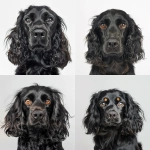Explore the Best AI Image Gallery

The Role of AI-Generated Images in Modern Design
Artificial Intelligence (AI) has drastically changed the landscape of creative industries, and one of the most visible transformations is in the realm of design. AI-generated images are increasingly employed across various sectors, from marketing to product design, providing artists and designers with innovative tools that expand their creative horizons.
Impact on the Creative Industry
The integration of AI in design processes eliminates many of the repetitive tasks that designers often grapple with. For instance, AI can quickly generate multiple iterations of a single design concept, drastically reducing the time required to experiment with visuals. This aspect is particularly beneficial for industries where speed to market is crucial, such as fashion and advertising.
Moreover, AI tools such as generative adversarial networks (GANs) enable designers to create elaborate images and art pieces with minimal human input. This capability has opened paths for new styles and aesthetics that demonstrate the creativity AI can bring, not to replace the human touch but to complement it.
Potential Uses of AI-Generated Images
The uses of AI-generated images are vast and versatile. Here are some notable applications:
- Marketing and Advertising: Brands use AI to create personalized ad visuals tailored to different demographics. These hyper-targeted images often result in higher engagement rates.
- Product Design: Companies leverage AI to simulate design concepts before committing to costly prototypes, allowing for testing and optimization that would be otherwise challenging.
- Game Design: In the gaming industry, AI can generate realistic textures and environments, contributing to the immersive experience of players.
- Social Media Content: Content creators use AI tools to enrich their visuals, making them stand out in the crowded social media landscape.
- Art Generation: Artists are utilizing AI to produce unique works that blend traditional techniques with algorithm-driven creativity, fostering collaboration that merges human and machine art.
Ethical Considerations
While the advantages of AI in design are undeniable, they do raise important ethical questions. The proliferation of AI-generated images has sparked debates about originality and authorship. For instance, when an AI creates artwork based on its training data, whose intellectual property rights apply? This question illustrates the need for clear guidelines regarding the use of AI in creative ventures.
Additionally, there is a concern about the potential for AI to perpetuate biases present in the data it learns from. For example, if an AI system is trained on images predominantly featuring certain racial or gender representations, the output may inherently reflect these biases. Designers must remain vigilant in ensuring that their use of AI does not unintentionally reproduce harmful stereotypes.
Future Trends
The future of AI-generated images in design is bright and full of possibilities. As technology continues to develop, we can expect to see:
- Improved Customization: AI will increasingly allow for hyper-customized designs, adapting visuals in real-time based on user preferences.
- Enhanced Collaboration: Designers and AI will work more closely together, leading to truly hybrid forms of creativity.
- Broader Accessibility: With user-friendly AI design tools emerging, more individuals will have the ability to create sophisticated designs, democratizing the creative process.
- Augmented Reality Integration: AI-generated imagery will play a significant role in AR applications, enabling more interactive and engaging public displays and marketing campaigns.
Conclusion
AI-generated images are transforming the design world, offering tools that enhance creativity while simultaneously posing challenges that need to be addressed responsibly. As we navigate this new creative era, understanding and balancing the potentials and pitfalls of AI will be crucial. Designers can leverage these technologies to innovate their practice while cultivating ethical standards that ensure the equitable and inclusive representation of diverse ideas and perspectives in the future of design.
](https://images.ai-img.art/thumbnails/150/77574caa025ba55169d6a4ed26b8bcf28a7d3e87a032fa938e7627b2a1f71862.webp)
](https://images.ai-img.art/thumbnails/150/3c26f61d589d80ee22455916dcf4b5e16460963667f2273ac246195006311786.webp)

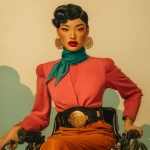



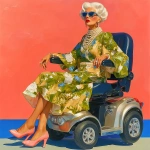


](https://images.ai-img.art/thumbnails/150/2ff105ce7f100c266fde0e63113798b17ef8c4836f02eda1d2bc3dd9dcc27929.webp)
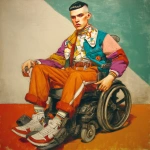


](https://images.ai-img.art/thumbnails/150/98359176a3cebe401a3fbe1080c7a4c225231f753dcca1bb018122c07110da26.webp)
](https://images.ai-img.art/thumbnails/150/8ee3c6e7dfd063ad94a9e05b0a14723e643fad0b300cddee134a11afdf92e19d.webp)
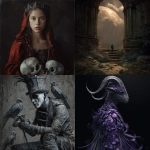










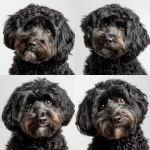


](https://images.ai-img.art/thumbnails/150/e06828477cb05f687a8e0c00fc196ee22bf20e84064a8ce6425a8f2670a6a3f2.webp)

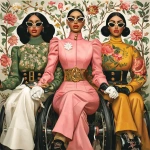
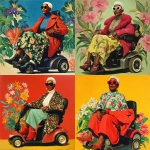

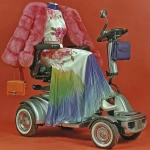



](https://images.ai-img.art/thumbnails/150/4c9c68becc73b14922ac55029bd5c4f700881f5b5d17adbf550dab36e3cc81b6.webp)
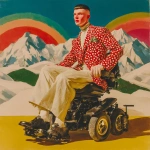

](https://images.ai-img.art/thumbnails/150/be43946713256e52e6584c5bc61c9fa513962683a2f91d850d6c03367f3f8f35.webp)





